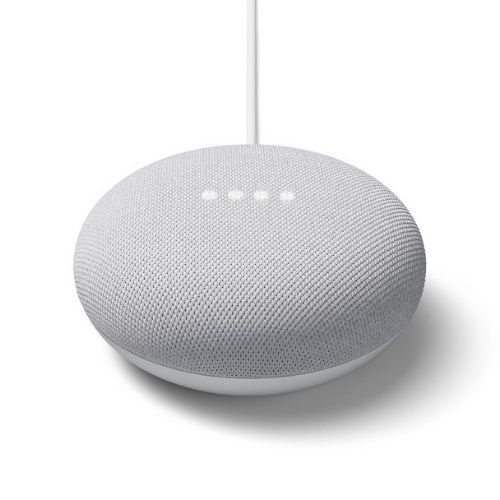 Google Assistant: Google Nest Mini
Google Assistant: Google Nest Mini
- Best smart displays
- Excellent video service selection
- Intuitive smart home controls
- Best smart displays
- Excellent video service selection
- Intuitive smart home controls
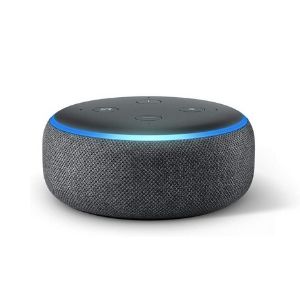 Amazon Alexa: Echo Dot
Amazon Alexa: Echo Dot
- Best smart speakers
- Excellent music service selection
- Best smart home compatibility
- Best smart speakers
- Excellent music service selection
- Best smart home compatibility
Bottom line: The gap is closing
Virtual assistants and smart speakers are spreading to more homes thanks to easy voice controls and useful smart home compatibility. But as much as Google Assistant† and Amazon’s Alexa try to differentiate themselves from their rivals, they’re getting more similar with every update.
Based on our research and testing, we think that Google Assistant and Alexa are both excellent options for a voice assistant, at least for most practical tasks like setting timers, smart home controls, listening to music, and checking the weather.
But each platform has its strengths. For a better virtual assistant and smart displays, we think Google’s the one to beat, but Alexa dominates in terms of music quality and smart home prowess. Despite these strengths, the one you choose ultimately boils down to personal preference.
We dive into our reasoning below and break down the key similarities and differences to help you choose an assistant that best fits your lifestyle.
Where should you start?
Compare Google Home and Amazon Alexa devices
| List price* |
| Speakers |
| Display |
|
Mini smart speaker
|
Mini smart speaker
|
Smart speaker
|
Smart speaker
|
Smart display
|
Smart display
|
| Google Nest Mini | Amazon Echo Dot | Google Home | Amazon Echo | Google Nest Hub Max | Amazon Echo Show |
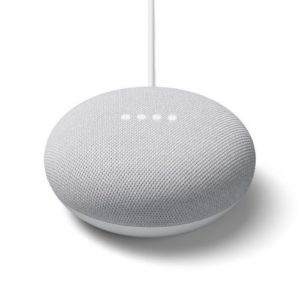 |
 |
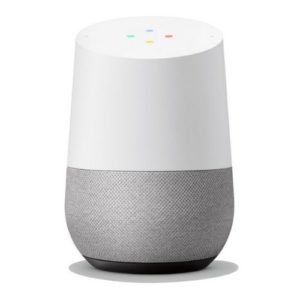 |
 |
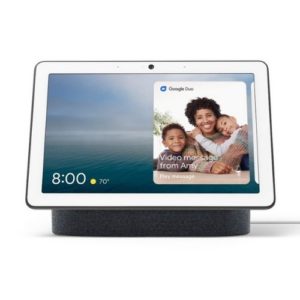 |
 |
| $49.00 | $49.99 | $99.00 | $99.99 | $229.00 | $229.99 |
| 1.6 in. speaker | 1.6 in. speaker | 2 in. tweeter 2 in. passive radiator (2) |
0.8 in tweeter 3 in. woofer |
0.7 in. tweeter (2) 3 in. woofer |
2.2 in. speaker (2) |
| N/A | N/A | N/A | N/A | 10 in. | 10.1 in. |
| View on Kohl's | View on Amazon | View on Walmart | View on Amazon | View on Kohl's | View on Amazon |
| Read review | Read review | Read review | Read review | Read review | Read review |
*Amazon.com list price as of 07/08/2020 at 4:32 p.m. (MT). Read full disclaimer.
Our approach
Before comparing Alexa and Google Assistant directly, we looked at over a dozen reviews covering this very subject and asked what was missing.
We found plenty of articles that summarize what each platform can (or can’t) do, but many skimmed over how well each does basic tasks. We also didn’t see very much information about how these platforms leverage their smartphone apps. As a result, our review takes a different approach.
We tested over a dozen features to make sure they work using a Google Nest Hub and an Amazon Echo Show. We chose these two devices because they cover the gamut of what each brand can do. If you want to find out more about our review process, head over to our testing methodology.
Google Assistant at a glance
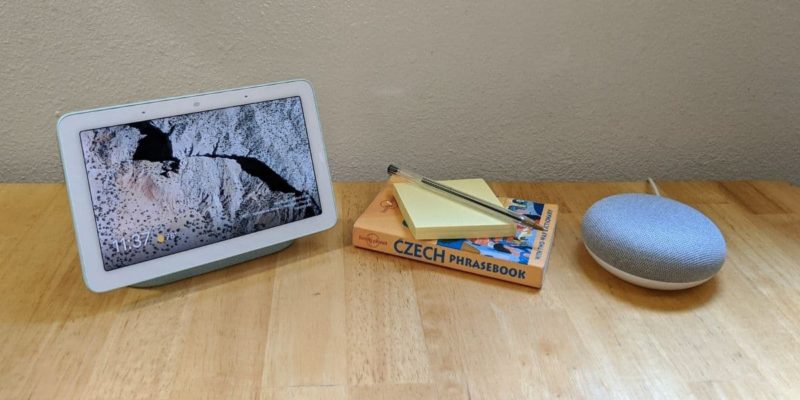
Who Google Assistant is best for
Google Assistant is for folks who want a dynamite personal assistant.
It’s true that Alexa boasts more third-party skills than Google Assistant. But we think that Google’s emphasis on productivity makes for better core skills to help you through your day, especially if you already have a Google account. As a bonus, we really like Google Nest smart displays and Google’s more substantial selection of video streaming services.
Check out our in-depth guides to Google Assistant to learn more:
Pros
- Best smart displays
- Excellent video service selection
- Intuitive in-app smart home controls
- Google account integration
Cons
- Fewer smart home options than Alexa
- Simplistic smart home routines
Smart speakers
Google has a smaller selection of smart speakers than Amazon. These speakers hold their own in terms of audio quality but overall aren’t as good as Echo speakers.
- Google Nest Mini (about $50): This is an upgraded version of the Google Home Mini. It comes with better sound quality and a wall-mounting option to save space on shelves and tables.
- Google Home (about $100): The Google Home has great sound quality compared to its tiny counterpart. It’s great for most living rooms and larger bedrooms.
- Google Home Max (about $300): Google brings the beat with its largest smart speaker so you can get powerful music in large family rooms where loud music thrives. But it’s pricier than the comparable Echo Studio.
Smart displays
Google’s smart displays are pleasant to use, particularly with how many video streaming services they support. It’s not a perfect feature (where are you, Netflix?) but is more capable than what we experienced with Alexa.
Another feature we like is the option to show curated photos from Google Earth and artwork when the screen’s not in use. This is in addition to drawing from your Google Photos collection.
- Google Nest Hub (about $130): This smart display is Google’s more affordable model due to a smaller 7-inch screen and no built-in camera. We think it works great as an alarm clock for adults or a tiny TV alternative for the kids’ playroom.
- Google Nest Hub Max (about $230): The Google Nest Hub Max has a large 10-inch screen—about the size of an iPad. It also has bigger speakers and a built-in security camera, making it great for video calls over Google Duo. The large size is perfect for recipes in the kitchen but works just as well for watching TV shows in the background of most medium and large rooms.
Unique Google Assistant abilities
Real-time language translation
In terms of sheer wow factor, Google Assistant’s ability to translate conversations between two languages is hard to top. You simply ask Google to help you speak a particular language or to turn on interpreter mode, and it does the rest. It’s not as fluid as actually speaking the other language since people need to pause between phrases to allow Google time to translate, but it’s incredible to have this feature.
While interpreter mode supports many languages, there’s still room to grow. This feature works on smartphones and smart speakers but is much more capable on a smartphone.
Multitasking
Google Assistant can handle up to three actions in a single voice command. All you have to do is say “and” between each request. Saying “Hey Google, turn off the lamp and lock the door” is much faster than making separate requests like on Alexa.
Amazon Alexa at a glance
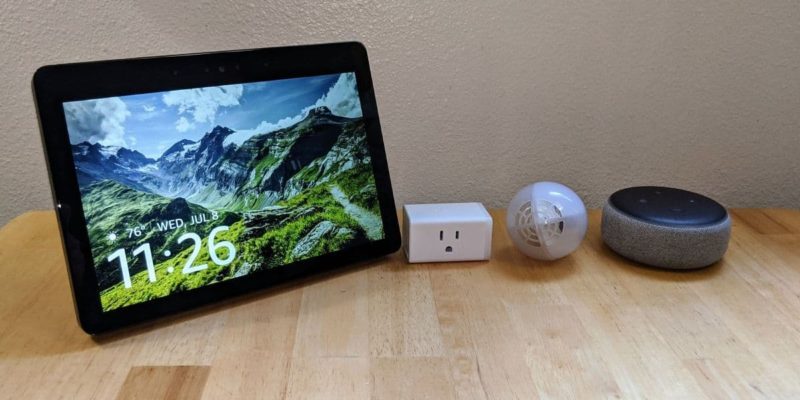
Who Amazon Alexa is best for
Amazon Alexa is for you if you want a house full of the latest smart home devices.
While we don’t think that Alexa can match Google’s productivity, there’s no denying that it’s better for building a smart home. Amazon’s drive to experiment with so many devices ultimately results in more innovation.
Think about it this way: Amazon has such a large manufacturing scale that it can afford to make Alexa-enabled microwaves and ovens without fundamentally changing its business. In contrast, Google is still a small-scale electronics manufacturer compared to what Amazon can do.
Another of Alexa’s advantages is that Echo smart speakers sound so good. They generally have better audio quality and music service selection than Google speakers. Considering music is one of the most popular features of smart speaker devices, it’s hard to ignore the superior sound quality.
Check out our in-depth guides to Alexa to learn more:
Pros
- Best smart speakers
- Excellent music service selection
- Better smart home compatibility than Google
- Dynamic smart home routines
Cons
- Limited support for video services
- Clunky in-app smart home controls
Smart speakers
Amazon’s Echo smart speakers created the pattern that most online reviewers use to judge all other smart speakers. They deliver big in terms of audio quality but at a price that’s more affordable than the industry-topping Sonos wireless speakers.
- Echo Flex (about $25): The Echo Flex plugs directly into a wall outlet and is a cheap option to add Alexa in hallways or small rooms.
- Echo Dot (about $50): While the Flex adds a basic smart speaker to most rooms, the Echo Dot is your starting place for better music quality.
- Echo (about $100): As the smart speaker market grows, the Amazon Echo doesn’t feel as groundbreaking as the original 2014 version. But it’s still a worthwhile addition to the smart home with better music quality than most competitors in this price range.
- Echo Plus (about $150): The Echo Plus isn’t much different than the standard Echo, except that it can control Zigbee smart devices without a hub. This powerful feature is ideal for smart homes with tons of sensors.
- Echo Studio (about $200): The Echo Studio is Amazon’s thunderous reply to folks that want the loud, vibrant music you might find in a stereo system. It even has Dolby Atmos surround sound, which pairs great with blockbuster movies on a Fire TV streaming device.
Smart displays
During our research, it was surprising that Alexa’s dominance with music services didn’t translate into similar performance for video services on smart displays.
While these are competent devices, we ultimately preferred Google’s approach (and more massive video service selection) as an easier product to use. They do have one advantage over Google smart displays: every model includes a camera for video calls.
- Echo Show 5 (about $90): The smallest Echo Show targets a lower price than Google’s cheapest smart display, and the minuscule 5-inch screen makes a better alarm clock.
- Echo Show 8 (about $130): This device competes directly with the Google Nest Hub but narrowly wins because it has a built-in camera. It’s great for offices and kitchens because it doesn’t take up much space.
- Echo Show (about $230): The Echo Show doesn’t hold up as well to Google as other Echo smart displays but is a solid option thanks to built-in Zigbee device compatibility.
- Fire TV Cube (about $120): It doesn’t have a built-in screen, but this smart speaker connects directly to your TV for stunning 4K movies and TV shows. It even links to other Echo smart speakers for a better TV experience than Google offers.
Amazon's pricing dominance
Unique Amazon Alexa abilities
Location triggers
Alexa routines can trigger based on a location. This helps control all kinds of devices and services, like starting a Spotify playlist when you get home from work. You can also get reminders about picking up tomatoes at your preferred grocery store.
You can add as many locations as you like by using the settings menu in the Alexa app. This is great for helping Alexa know where to jump into action when you want to do something.
Dynamic voice tones
Alexa recently gained the ability to adopt different vocal tones to match the emotions in news articles and user interactions. It can tell if you’re happy or sad and reacts accordingly.
Our experience was a mixed bag. Alexa sounds more sympathetic than Google, but not as confident. Still, we suppose emotional sensitivity is better than the hasty confidence behind Google Assistant’s voice.
Whisper Mode
Similarities
There are tons of similarities between Google Assistant and Alexa that make them interchangeable in many situations. Here are some examples.
Voice controls
Voice controls are the main selling point of virtual assistants like Amazon’s Alexa, Samsung’s Bixby, Google Assistant, and Apple’s Siri. Entire swathes of the internet are abuzz about which system answers questions better and what skills they have.
Still, there’s an unspoken dismissal of the core things most folks use virtual assistants for:
- Timers, reminders, and alarms
- News and weather
- Smart home controls
- Music
We’re not saying that you’ll never do any other tasks or have an identical experience on both Google Assistant and Alexa. But in practice, there’s very little difference for the things you’ll do most often with voice controls.
The only real difference is how voice search answers questions, with Alexa usually offering briefer answers and Google providing more detail. Even then, you’ll likely get a satisfactory answer on most questions as long as you’re not digging too deep into specifics.
For example, both Google Assistant and Alexa know who stole the most career bases in Major League Baseball (Rickey Henderson), but they can’t tell you who did it in 2017 (Dee Gordon).
Why does this happen? It’s because voice assistants have to choose one reply within a few seconds. That quick turnaround doesn’t allow time to browse every single website on a topic, even with the insane processing power involved. In these cases, you’re better off whipping out your smartphone to find the best information.
Still, expect this to change as voice assistants inevitably get smarter and faster. Who knows what they’ll be capable of in five years?
Skip the wake word
Timers, reminders, and alarms
You can ask Google and Alexa to set reminders, timers, and alarms quite easily:
- “Remind me to pick up the dog from the groomer.”
- “Set a timer for 5 minutes.”
- “Set an alarm for 7:00 a.m.”
Want to make reservations at a restaurant or order food for pickup? This is possible too, though you might have to set up a preferred service like Grubhub or DoorDash.
Location-based reminders
Entertainment
Most popular music and video services work with both platforms, though there are some minor differences in the selection of brands. Honestly, if you prefer Amazon Music or YouTube Music, then you should choose the voice assistant that works with it.
Check out our breakdown of compatible entertainment services to learn what works with each assistant.
| Music services |
| Video services |
| Google Assistant | Alexa |
|
|
|
|
While looking through Alexa’s video skills, we didn’t find native support for many popular streaming services if you’re using an Echo Show. It seems the best way to watch other services using Alexa is to get a Fire TV streaming device for your TV, which offers more streaming integrations than Google.
Even though Google Assistant supports Netflix, it didn’t work when we asked it to play videos on our Google Nest Hub smart display. But you’re not entirely out of luck on the Netflix front since Google can stream it to a Chromecast device.
Audiobooks
Multiple accounts
Alexa and Google Home each support up to six user accounts, though Google handles its accounts much better than Alexa. For Google, you can add anyone to your home for free as long as they have a Google account. This includes supervised accounts that you create for children using Google Family Link.
For Amazon, you can add one other adult with an Amazon account to your Alexa household and up to four accounts for children. Unfortunately, it costs extra to get Amazon accounts for children because you need to subscribe to Amazon FreeTime Unlimited.
To be fair, neither voice assistant requires more than one user account to start answering questions and controlling smart home devices. But you miss out on things like personalized reminders and access to your meticulously-curated Spotify playlists when you don’t link multiple accounts.
Voice match
Calls
You can make free phone calls using Alexa and Google Assistant to anyone in your contacts list, a business, or by speaking the phone number directly. Calling also works on smart speakers and displays using Drop In (Alexa) and Google Duo.
If you have a smart display with a camera, then Alexa uses Skype for video calls, while Google Duo is the equivalent on Nest Hub Max.
Intercoms
You can use smart speakers and displays as intercoms for Google and Alexa. The basic intercom command for both systems is “announce” or “broadcast,” though Google has extra options like “shout” and “tell everyone.” Now you can tell the kids to come down for dinner or let everyone know you’re running late.
Send a reply to intercom messages
Differences
Much like early Android and iOS smartphones were worlds apart but now practically mirror each other in features, you can expect the gap between Alexa and Google Assist to narrow over time as they mature.
For now, the differences between Google Assistant and Amazon Alexa boil down to how each system deals with specific tasks like smart home routines, shopping lists, and how they design their mobile apps.
Smart speakers and smart displays
Google and Amazon have different ideologies when it comes to smart speakers. Amazon seems content to experiment with as many Echo devices as possible, while Google perfects a few devices for specific scenarios.
On top of a full range of traditional smart speakers and smart displays, Amazon’s playful experimentation results in some nontraditional Echo devices:
- Echo Loop smart ring (for sale by invitation only)
- Echo Frames eyeglasses (for sale by invitation only)
- Echo Auto for cars
- Echo Link for controlling stereo systems
About invitation-only Echo products
By comparison, Google’s most radical smart speakers already serve another purpose, and Google Assistant is only a bonus feature:
- Google Nest Wi-Fi router
- Google Nest Secure security system
- Nest Cam IQ Indoor security camera
For more thoughts on each brand’s smart speakers and smart displays, check out our at-a-glance summaries of Google Assistant and Amazon Alexa above.
Smart home compatibility
The first Echo device with Alexa voice services hit the market in 2014—two full years before the Google Home speaker landed. Because of this head start, Alexa supports more smart home devices than Google. Still, most major smart home device makers like Philips Hue and Samsung SmartThings support both.
But Alexa has another advantage over Google: it can directly control Zigbee devices using the Echo Plus, Echo Studio, and Echo Show. This compatibility makes Alexa a better choice overall if you want tons of smart home gear.
Mobile apps
You’ll probably use voice commands to control smart home devices more than the mobile apps from each company. But the mobile app is best for managing settings and for quieter times when you don’t want a vocal reply.
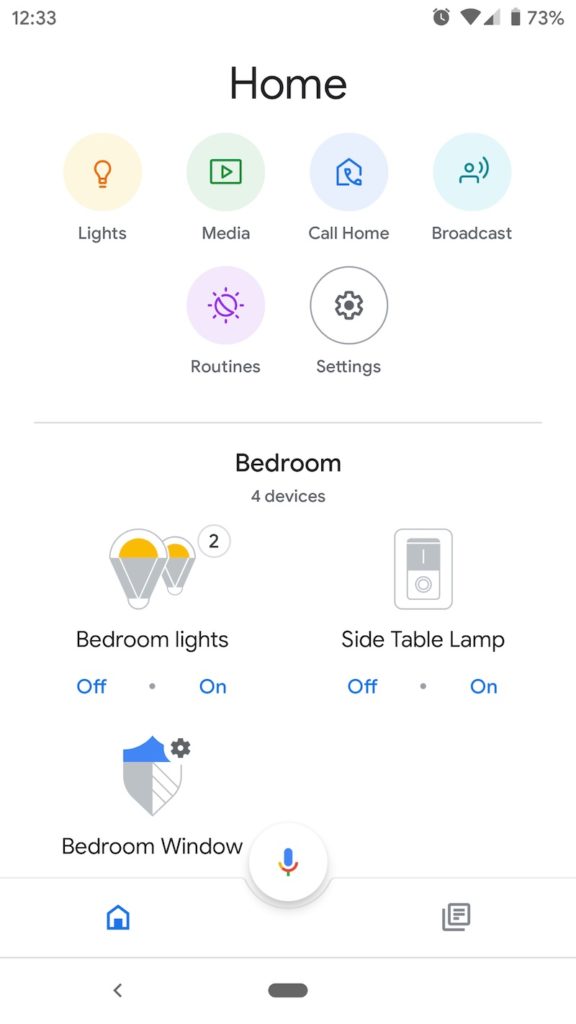
Smart device list in the Google Home app

Smart device list in the Amazon Alexa app
If you want quick access to control your smart home devices, the Google Home app is the better option. It places all of your devices on the app’s home screen so you can quickly navigate to the one you want to control. You can also create groups of devices specific to the rooms in your home to make it easier to turn off the lights.
Alexa doesn’t place your devices on a single screen like Google—it uses buckets to categorize your smart devices. This is a bit clunkier than Google Home, since you need to select a category first before controlling an individual device. For faster access, you can group the devices, which places them in an easily accessible spot on the devices tab of the Alexa app.
Advanced room planning
If you want the plug to stay on, you'll need to specify turning off the lights in that room or place the plug in a separate room altogether.
Smart home routines
Alexa and Google Assistant have differing approaches to smart home functionality:
- Alexa can trigger actions and react to conditions in your smart home.
- Google Assistant only triggers actions. It can’t react to most smart home devices.
Google Assistant reactions
Let’s try creating a routine using the Alexa app. When you select the option to create a routine, you’ll see a screen with basic options:

You have the option to name the routine, set a trigger condition (“When this happens”), and set an action dictating how Alexa reacts to that action (“Add action”). In the second option, “When this happens,” you can choose from various triggers, including voice commands, specific dates and times, smart home devices, location, alarms, Echo Buttons, and Alexa Guard.

One of the best examples of Alexa’s superiority with routines is the simple option to have it play a sound or message whenever a sensor triggers on the front door. Alexa can then say the front door is open. This is something Google Assistant simply can’t do.
In contrast, Google’s routines are too simplistic. The only trigger options it gives you are when you say a specific voice command or at a particular time each day.
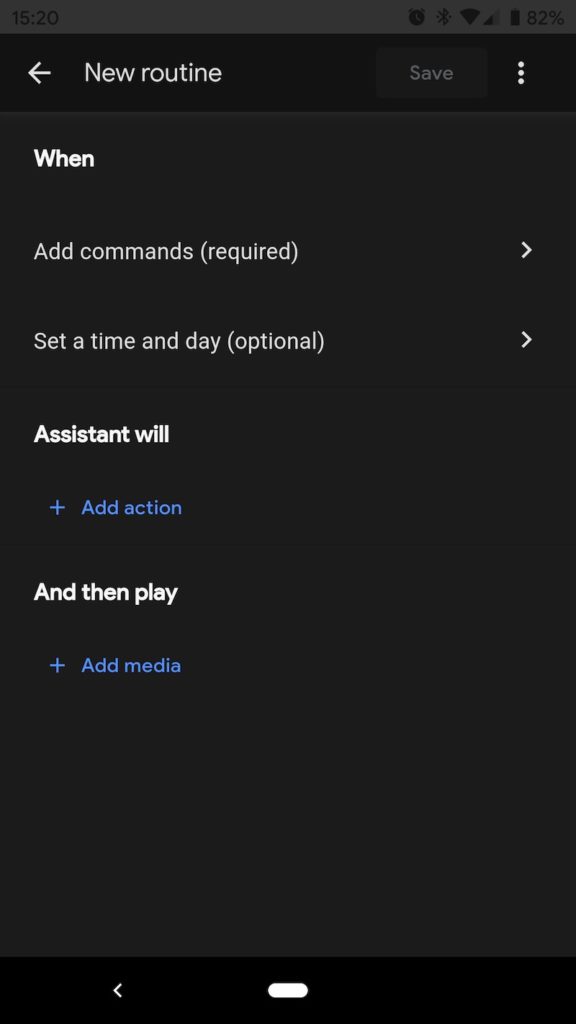
Alexa’s flexibility with routines is akin to what you find in a smart home system like Samsung SmartThings, making it much more effective and easier to use.
Shopping lists

Google Assistant shopping list
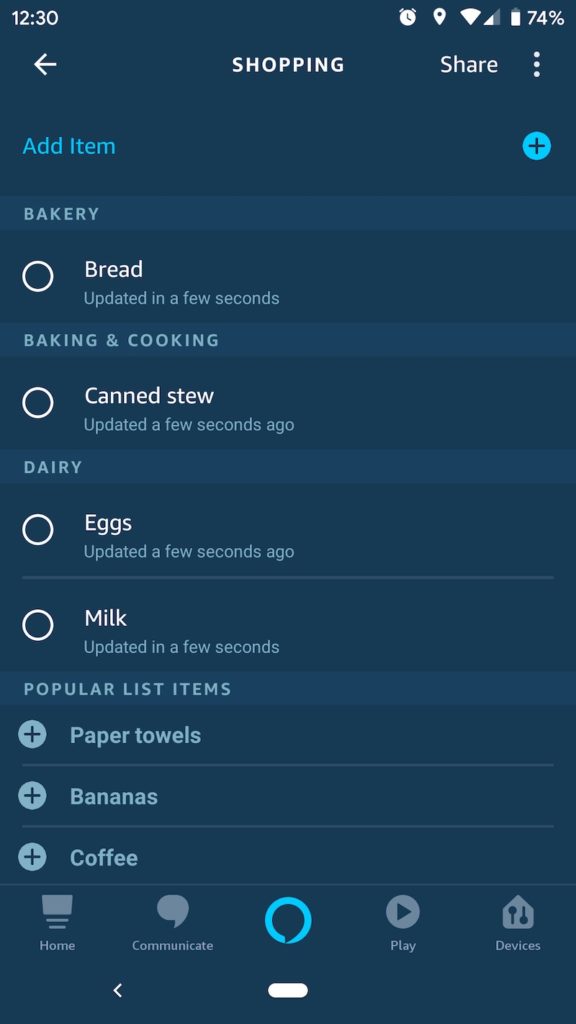
Amazon Alexa shopping list
Both Alexa and Google allow you to create shopping lists using voice commands: “Add X to the shopping list.” But Alexa has a more intuitive shopping list feature than Google Assistant because it stores your lists in the Alexa app. Just select Lists & Notes from the popup menu to access them.
Instead of placing your list in the Google Home app, or even sending it to Google Keep (a great app for shopping lists), Google Assistant stores its lists on a website: shoppinglist.google.com. This is an odd choice that isn’t as intuitive. It requires you to leave the Google Home app or add items using voice commands.
Google shopping lists are easy enough to use once you’re on the website. We particularly like that you can choose specific items on Google Shopping List and get a helpful photo. It’s a strong visual reminder, something Alexa doesn’t do.
In short: While Alexa’s lists are easier to access, the added detail in Google’s lists is absolute perfection for people that want a specific item. This is especially great if you help someone with their shopping or have someone shop for you.
Final word
There are plenty of differences between Google Assistant and Alexa, but they ultimately achieve similar performance when it comes to tasks you’ll use every day.
Still, Google Assistant’s smart displays and access to Google’s treasure trove of information make it a better digital assistant. But Alexa steals the spotlight on speaker quality and smart home integration.
If you’re interested, we have a lot more to say about these companies. Check out our related articles below to explore what they can do and see our favorite devices for each.
Disclaimers
*Amazon.com list price as of 07/08/2020 at 4:32 p.m. (MT). Product prices and availability are accurate as of the date/time indicated and are subject to change. Any price and availability information displayed on Amazon at the time of purchase will apply to the purchase of this product. Safewise.com utilizes paid Amazon links.
Certain content that appears on this site comes from Amazon. This content is provided “as is” and is subject to change or removal at any time.
†Google, Google Assistant, Google Nest, Google Nest Mini, Google Home and other marks are trademarks of Google LLC.
The post Google Home vs. Alexa: Which Assistant is Best? appeared first on SafeWise.

No comments:
Post a Comment